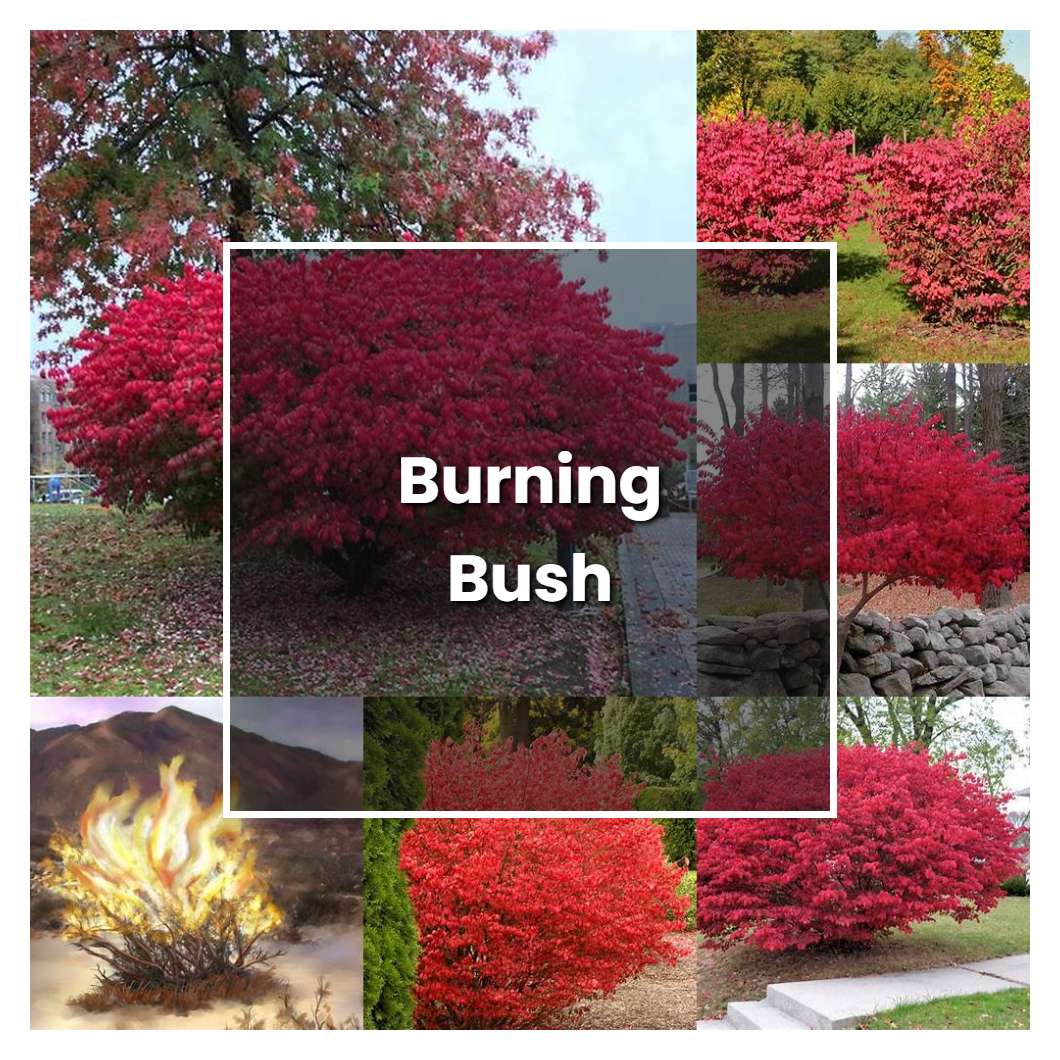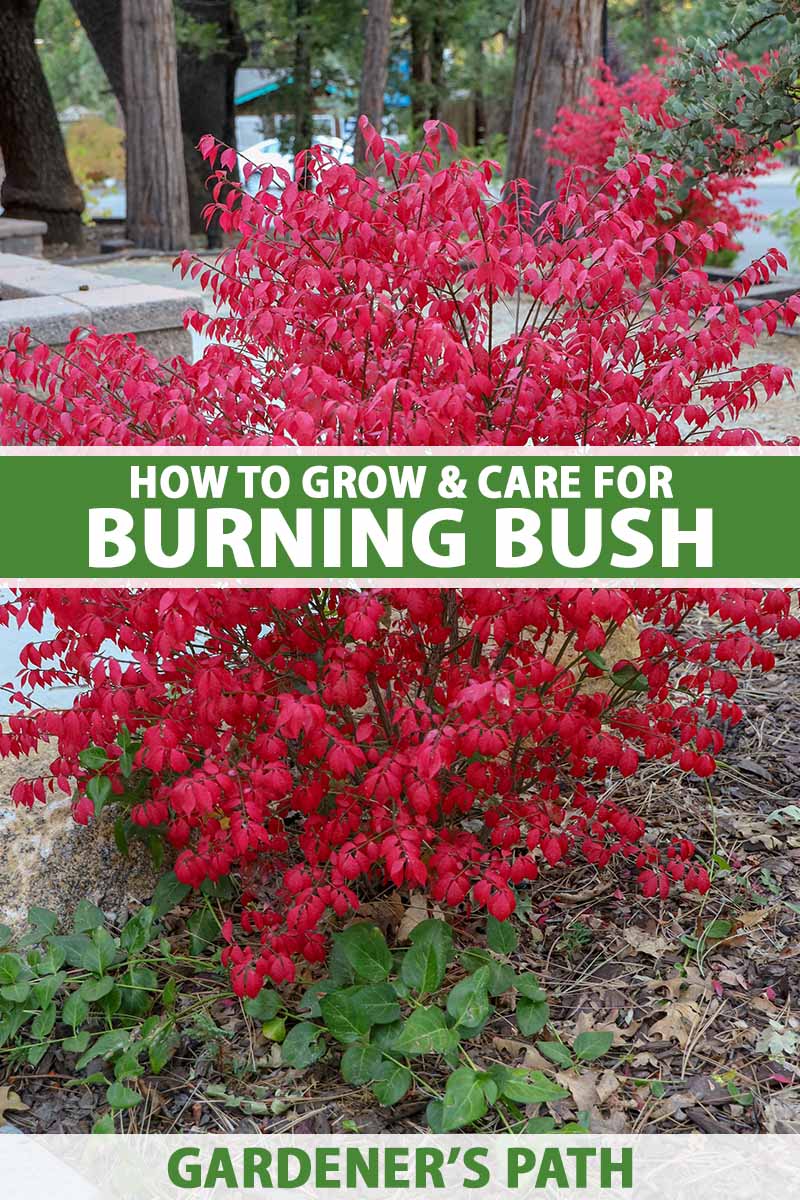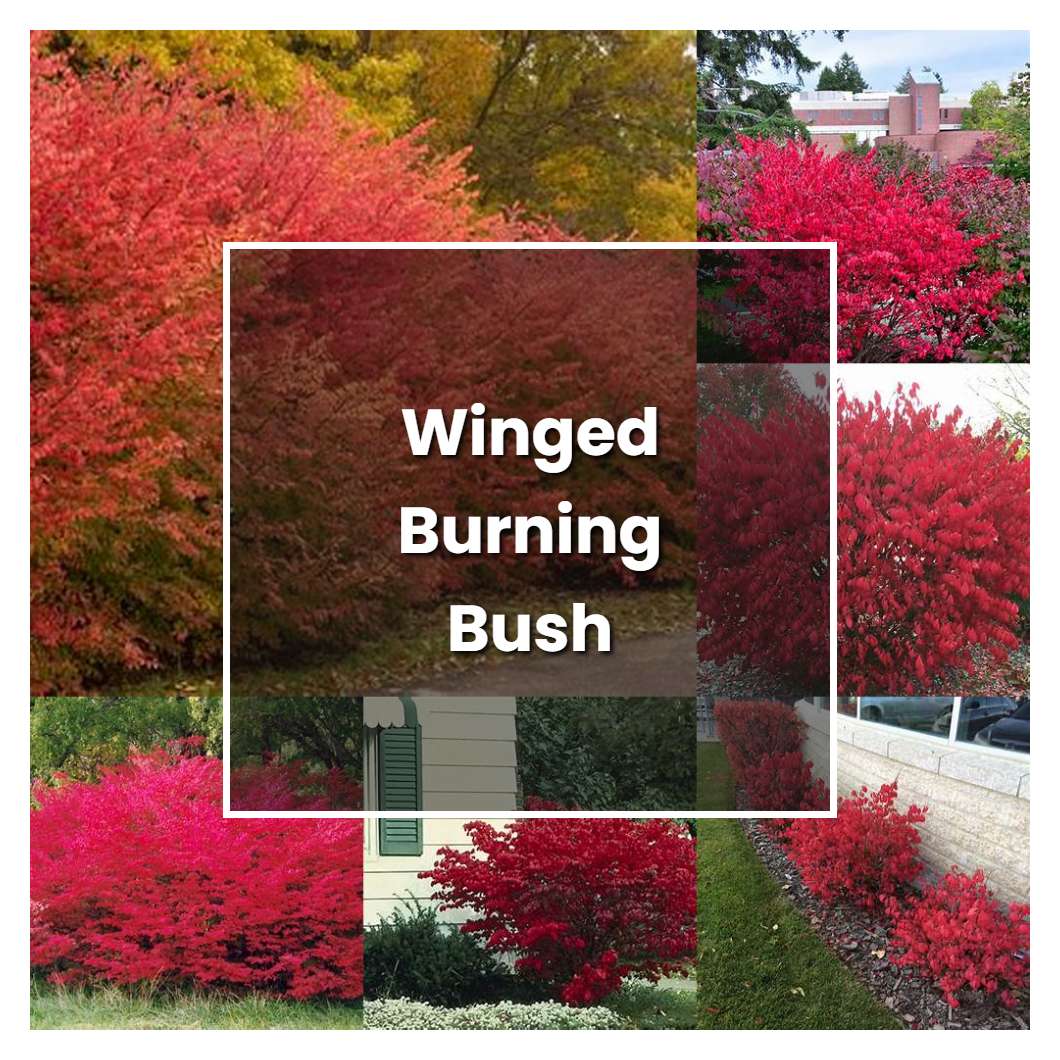What is Burning Bush and Why is it a Popular Choice for Landscaping?
Burning Bush, also known as Euonymus alatus, is a deciduous shrub native to Asia. It has gained popularity in landscaping due to its vibrant fall colors, low maintenance requirements, and ability to thrive in a variety of environments. The shrub’s winged stems and brilliant red foliage make it a stunning addition to any garden or landscape design. Burning Bush is also a popular choice for hedges, borders, and screens due to its compact growth habit and ability to tolerate pruning.
One of the primary reasons Burning Bush is a favorite among landscapers and gardeners is its adaptability. It can grow in a range of soils, from acidic to alkaline, and can tolerate full sun to partial shade. Additionally, Burning Bush is relatively drought-tolerant, making it an excellent choice for water-conscious gardeners. Its low maintenance requirements and ability to thrive in challenging conditions make it an ideal choice for busy homeowners or those new to gardening.
When considering adding Burning Bush to your landscape, it’s essential to understand its growth habits and requirements. Burning Bush typically grows between 10 to 20 feet tall, with a spread of around 10 to 15 feet. It has a moderate growth rate, which means it can take several years to reach its mature size. However, with proper care and maintenance, Burning Bush can provide years of vibrant color and texture to your garden or landscape.
While Burning Bush is a relatively easy-to-grow shrub, it’s crucial to understand the factors that can impact its growth rate. Climate, soil quality, sunlight, watering, and fertilization all play a role in determining how fast Burning Bush grows. By understanding these factors and providing the optimal environment, you can help your Burning Bush thrive and reach its full potential.
Factors Affecting the Growth Rate of Burning Bush
Several factors can impact the growth rate of Burning Bush, including climate, soil quality, sunlight, watering, and fertilization. Understanding these factors is crucial to creating an optimal environment for Burning Bush growth and maximizing its potential.
Climate plays a significant role in determining the growth rate of Burning Bush. In general, Burning Bush thrives in temperate climates with moderate temperatures and rainfall. Extreme temperatures, either hot or cold, can impact the plant’s growth rate and overall health. For example, temperatures above 90°F (32°C) can cause Burning Bush to become stressed, leading to reduced growth and increased susceptibility to disease.
Soil quality is another critical factor affecting Burning Bush growth. Burning Bush prefers well-draining soil with a slightly acidic to neutral pH (5.5-7.0). Soil with poor drainage or high levels of salt can impact the plant’s ability to absorb essential nutrients, leading to reduced growth and increased risk of disease.
Sunlight is also essential for Burning Bush growth. While Burning Bush can tolerate partial shade, it prefers full sun to produce the most vibrant fall colors. However, in warmer climates, some afternoon shade can help prevent scorching and promote healthy growth.
Watering is another critical factor affecting Burning Bush growth. Burning Bush prefers consistent moisture, especially during the first year after planting. However, overwatering can lead to root rot and other problems, while underwatering can cause stress and reduced growth.
Fertilization can also impact Burning Bush growth. Burning Bush benefits from regular fertilization, especially during the growing season (spring-fall). A balanced fertilizer with a ratio of 10-10-10 (nitrogen-phosphorus-potassium) can provide essential nutrients for healthy growth.
By understanding these factors and creating an optimal environment, you can help your Burning Bush grow at its best rate. However, it’s essential to remember that Burning Bush growth rates can vary depending on specific conditions. On average, Burning Bush grows around 3-5 feet per year, but this can be influenced by factors such as climate, soil quality, and maintenance.
How to Create an Optimal Environment for Burning Bush Growth
Creating an optimal environment is crucial for Burning Bush growth and maximizing its potential. By choosing the right location, preparing the soil, and providing adequate sunlight and watering, you can help your Burning Bush thrive.
When selecting a location for your Burning Bush, consider the amount of sunlight it will receive. Burning Bush prefers full sun to partial shade, so choose a location that receives at least 4-6 hours of direct sunlight per day. Also, ensure the location is well-draining, as Burning Bush is susceptible to root rot in waterlogged soil.
Preparing the soil is also essential for Burning Bush growth. Burning Bush prefers slightly acidic to neutral soil with a pH between 5.5 and 7.0. Test your soil to determine its pH level and amend it if necessary. Add organic matter such as compost or well-rotted manure to improve soil fertility and drainage.
Watering is also critical for Burning Bush growth. Water your Burning Bush regularly, especially during the first year after planting. Aim to provide about 1 inch of water per week, either through rainfall or irrigation. However, avoid overwatering, which can lead to root rot and other problems.
In addition to sunlight, soil, and watering, fertilization can also impact Burning Bush growth. Feed your Burning Bush with a balanced fertilizer (10-10-10) in the spring and summer months. This will provide essential nutrients for healthy growth and promote vibrant fall colors.
By creating an optimal environment, you can help your Burning Bush grow at its best rate. Remember, Burning Bush growth rates can vary depending on specific conditions, but with proper care and maintenance, you can expect your Burning Bush to grow around 3-5 feet per year. By following these tips, you can unlock the full potential of your Burning Bush and enjoy its vibrant fall colors for years to come.
The Role of Pruning in Shaping and Maintaining Burning Bush
Pruning is an essential aspect of maintaining the shape and promoting healthy growth of Burning Bush. Regular pruning helps control the plant’s size, encourages new growth, and removes dead or damaged branches. By pruning your Burning Bush effectively, you can maintain its natural shape, promote healthy growth, and encourage vibrant fall colors.
When to Prune Burning Bush
The best time to prune Burning Bush is in late winter or early spring, before new growth begins. Pruning at this time helps minimize the risk of disease and pest infestations, and allows the plant to heal quickly. Avoid pruning in the fall, as this can stimulate new growth that may not have time to harden off before winter.
How to Prune Burning Bush
When pruning Burning Bush, use sharp, clean pruning tools to prevent spreading diseases. Remove any dead, diseased, or damaged branches, cutting them off at the base. Cut back overgrown branches to maintain the plant’s natural shape, and thin out the center of the plant to allow for good air circulation.
Tips for Effective Pruning
When pruning Burning Bush, keep the following tips in mind:
- Make clean cuts just above a growth node, at a 45-degree angle.
- Remove no more than one-third of the plant’s foliage at a time.
- Prune in a way that maintains the plant’s natural shape and promotes good air circulation.
By pruning your Burning Bush regularly and effectively, you can maintain its shape, promote healthy growth, and encourage vibrant fall colors. Remember to prune at the right time, use the right tools, and follow proper pruning techniques to get the most out of your Burning Bush.
Common Problems that Can Affect Burning Bush Growth
Despite its hardiness and low maintenance requirements, Burning Bush can be susceptible to certain problems that can impact its growth. Some common issues that can affect Burning Bush growth include pests, diseases, and nutrient deficiencies.
Pests
Burning Bush can be susceptible to pests such as aphids, spider mites, and scale. These pests can cause damage to the plant’s leaves and stems, and can also transmit diseases. To control pests, use insecticidal soap or neem oil, and ensure good air circulation around the plant.
Diseases
Burning Bush can be susceptible to diseases such as root rot, leaf spot, and powdery mildew. These diseases can cause damage to the plant’s leaves and stems, and can also impact its growth. To control diseases, use fungicides, and ensure good air circulation around the plant.
Nutrient Deficiencies
Burning Bush can be susceptible to nutrient deficiencies, particularly nitrogen and iron deficiencies. These deficiencies can cause yellowing of the leaves, and can also impact the plant’s growth. To control nutrient deficiencies, use fertilizers, and ensure the soil has adequate nutrients.
Solutions and Preventative Measures
To address these common problems, use the following solutions and preventative measures:
- Use insecticidal soap or neem oil to control pests.
- Use fungicides to control diseases.
- Use fertilizers to control nutrient deficiencies.
- Ensure good air circulation around the plant.
- Water the plant regularly, but avoid overwatering.
By being aware of these common problems and taking preventative measures, you can help ensure the health and growth of your Burning Bush. Remember to monitor your plant regularly, and take action quickly if you notice any problems.
How Fast Does Burning Bush Grow: What to Expect
Burning Bush is a relatively fast-growing shrub, with an average annual growth rate of 3-5 feet. However, the growth rate can vary depending on factors such as climate, soil quality, and maintenance. In ideal conditions, Burning Bush can grow up to 10-15 feet tall and 6-8 feet wide, making it a great choice for hedges, screens, and borders.
Factors Affecting Growth Rate
Climate, soil quality, and maintenance are the primary factors that affect the growth rate of Burning Bush. In areas with mild winters and cool summers, Burning Bush can grow faster and more vigorously. In areas with extreme temperatures, growth may be slower. Soil quality also plays a significant role, as Burning Bush prefers well-draining soil with a slightly acidic to neutral pH.
Maintenance Requirements
Regular maintenance is essential to promote healthy growth and maximize the growth potential of Burning Bush. This includes watering, fertilizing, pruning, and pest management. By providing the right conditions and maintenance, you can expect your Burning Bush to grow at a rate of 3-5 feet per year.
What to Expect in the First Year
In the first year after planting, Burning Bush may grow at a slower rate as it establishes its root system. However, with proper care and maintenance, it can still grow up to 2-3 feet in the first year. In subsequent years, the growth rate can increase to 3-5 feet per year, depending on the factors mentioned above.
Maximizing Growth Potential
To maximize the growth potential of Burning Bush, provide the right conditions and maintenance. This includes:
- Planting in well-draining soil with a slightly acidic to neutral pH.
- Watering regularly, but avoiding overwatering.
- Fertilizing annually with a balanced fertilizer.
- Pruning regularly to maintain shape and promote healthy growth.
- Managing pests and diseases promptly.
By following these tips, you can expect your Burning Bush to grow at a rate of 3-5 feet per year and reach its full potential.
Comparing Burning Bush to Other Ornamental Shrubs
Burning Bush is a popular ornamental shrub known for its vibrant fall colors and low maintenance requirements. However, it’s not the only option for landscaping. Other popular ornamental shrubs include Boxwood, Holly, and Rhododendron. In this section, we’ll compare Burning Bush to these shrubs in terms of growth rate, maintenance requirements, and overall performance.
Growth Rate
Burning Bush has a moderate growth rate, averaging 3-5 feet per year. In comparison, Boxwood has a slow growth rate, averaging 1-2 feet per year, while Holly has a moderate growth rate, averaging 2-3 feet per year. Rhododendron has a fast growth rate, averaging 5-6 feet per year.
Maintenance Requirements
Burning Bush has low maintenance requirements, needing only occasional pruning and watering. Boxwood requires regular pruning to maintain its shape, while Holly requires occasional pruning and protection from extreme temperatures. Rhododendron requires regular watering and fertilization to promote healthy growth.
Overall Performance
Burning Bush is known for its vibrant fall colors and ability to thrive in a variety of conditions. Boxwood is known for its compact growth habit and ability to tolerate shade. Holly is known for its bright red berries and ability to attract wildlife. Rhododendron is known for its showy flowers and ability to thrive in acidic soils.
Conclusion
While Burning Bush is a popular ornamental shrub, it’s not the only option for landscaping. By comparing Burning Bush to other popular shrubs, you can make an informed decision about which shrub is best for your specific needs. Remember to consider factors such as growth rate, maintenance requirements, and overall performance when selecting an ornamental shrub for your landscape.
Conclusion: Maximizing the Growth Potential of Burning Bush
In conclusion, Burning Bush is a versatile and attractive ornamental shrub that can add value to any landscape. By understanding the factors that affect its growth rate, creating an optimal environment, and providing proper care and maintenance, you can maximize the growth potential of Burning Bush.
Key Takeaways
To summarize, the key takeaways from this article are:
- Burning Bush is a fast-growing shrub that can thrive in a variety of conditions.
- Climate, soil quality, sunlight, watering, and fertilization are all important factors that can impact the growth rate of Burning Bush.
- Creating an optimal environment, including choosing the right location and preparing the soil, is crucial for promoting healthy growth.
- Pruning is an essential part of maintaining the shape and promoting healthy growth of Burning Bush.
- Common problems that can impact Burning Bush growth include pests, diseases, and nutrient deficiencies.
Final Tips
To maximize the growth potential of Burning Bush, remember to:
- Provide adequate sunlight and watering.
- Fertilize regularly to promote healthy growth.
- Prune regularly to maintain shape and promote healthy growth.
- Monitor for pests and diseases and take action promptly if necessary.
By following these tips and understanding the factors that affect the growth rate of Burning Bush, you can enjoy a healthy and thriving shrub that adds value to your landscape.



:max_bytes(150000):strip_icc()/burning-bush-shrubs-invasive-plants-2132438-05-63a9615672c64907bf4e01ee622dd3eb.jpg)



